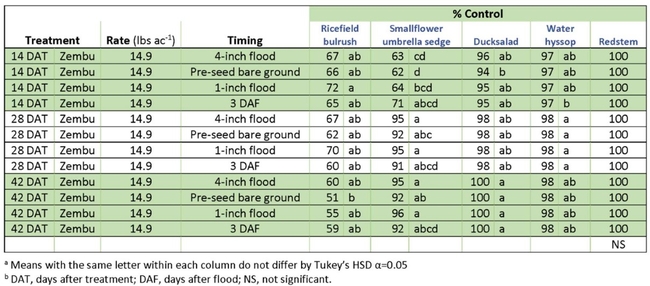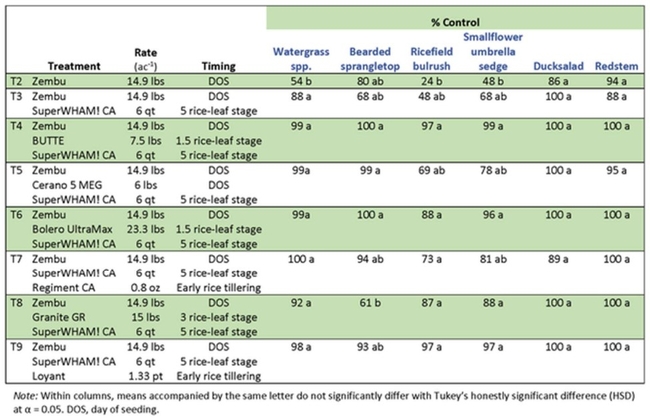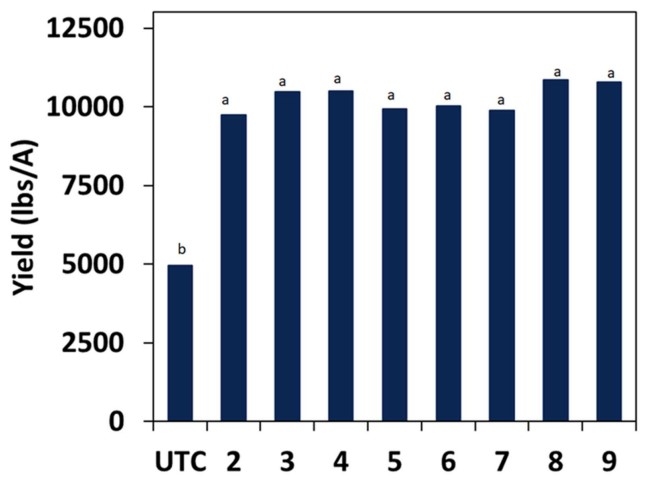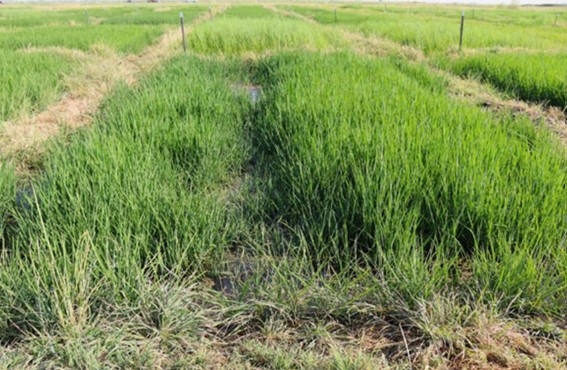A system of permanently flooded rice and a lack of diverse weed management techniques have selected for flood-tolerant weed populations in California water-seeded rice fields. Rising herbicide resistance results in increased costs of weed management, as well as increases the difficulty of growing rice in California. One technique to delay further expansion of herbicide resistance is to develop new herbicides to assist in managing current herbicide-resistant weed biotypes.
From 2019-2022, greenhouse and field experiments were conducted to characterize Zembu (active ingredient pyraclonil) activity on common California rice weeds alone and in combination with currently available herbicides.
Zembu, a novel protoporphyrinogen oxidase (protox) inhibiting active ingredient developed for California rice, was applied alone and in combination with other herbicides to determine grass, sedge, and broadleaf control and crop safety.
These experiments indicated that Zembu applied alone is insufficient for broad-spectrum weed control (Table 1), but, when applied in combination with currently available herbicides (SuperWHAM!, Cerano, Butte, Bolero, Granite, Regiment, Loyant) can provide consistently greater control of watergrass species, bearded sprangletop, ricefield bulrush, smallflower umbrella sedge, ducksalad, and redstem (Table 2). Yields from plots treated with Zembu, alone and in combination with other herbicides, were significantly higher than untreated control plots. There was no significant difference in yield among any plots treated with Zembu (Figure 1). There was evidence of temporary plant phytotoxicity in some plots treated with Zembu, Bolero, and SuperWham (Figure 2), but no plots demonstrated lasting injury that affected rice yields. Zembu was effective as a base treatment herbicide for incorporation into water-seeded rice weed management programs.
Table 1. Sedge and broadleaf control from Zembu at different application timings in water-seeded rice and at three assessment dates as a repeated measure pooled across 2019, 2020, and 2023ab



